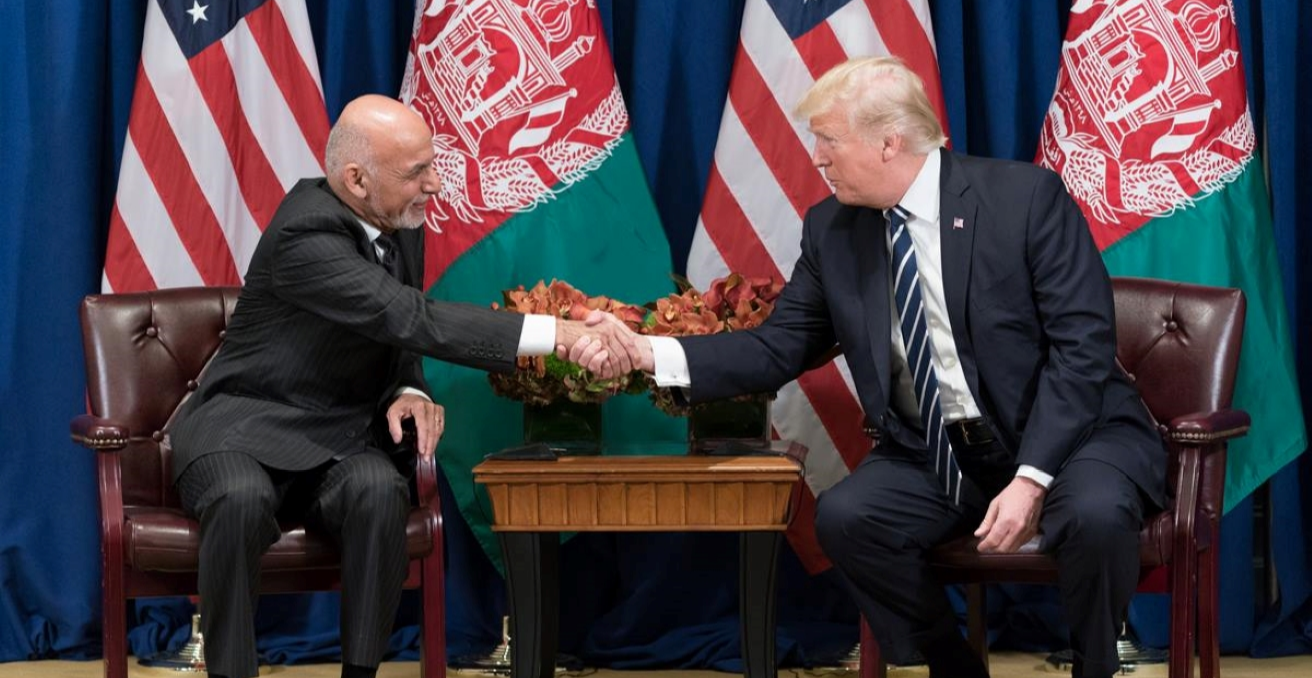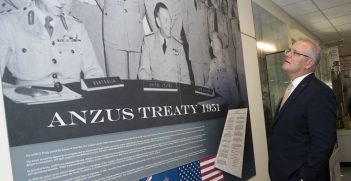The Afghan Peace Talks: Certainties, Uncertainties, and Unknowns

The peace agreement between the US and Taliban has multiple uncertainties. Stumbling blocks have stalled the post-agreement agenda and getting over them poses formidable challenges.
One certainty in the confusion surrounding the current “peace talks” with Afghanistan’s Taliban is that US President Donald Trump is fully committed to an exit strategy that, by his definition, will “end” this “endless war.”
How and when that happens remains to be seen. Although the US and Taliban reached a comprehensive peace agreement in Doha on 29 February, concerns existed amongst both internal and external stakeholders that subsequent intra-Afghan negotiations to reach a political settlement with the Taliban would falter. This has eventuated.
It was always questionable whether the US and Taliban could reach a “balanced” peace agreement. Although Trump claimed an agreement would be conditions-based and not set by any timeline, the reality is that a timeline did apply. The agreement is certainly conditional, as written. But the implicit timeline for concluding the agreement was prior to November’s US presidential elections. This would enable Trump to play this achievement to his electoral advantage – that’s simply politics.
The Taliban knew this and played it to their advantage also. Their insistence to negotiate first with the US and not the Afghanis, and their use of pressure tactics by stringing out negotiations over some 18 months to endanger Trump’s timeline, resulted in an outcome that is widely seen as skewed in favour of the Taliban.
The US accepted this outcome as the best practical deal to kickstart the intra-Afghan negotiations, and on 10 March, obtained UN Security Council endorsement of their agreement, adding further pressure on all parties to maintain the momentum.
Conditions applicable to Taliban behaviour within the agreement are very broadly defined. Their core commitment is they would not “threaten the security” (read, “attack”) of US forces or their allies and would prevent other terrorist organisations from doing so. They also agreed to commence intra-Afghan negotiations with a committee of Afghan government-led representatives on 10 March, on the precondition of a good-will prisoner swap – up to 5000 Taliban for up to 1000 government prisoners. Remaining prisoners would be released within the subsequent three months.
US commitments are more explicit. During the first 135 days, the period up to mid-July, the US would reduce their forces to 8,600, from about 13,000. Allied forces would also reduce proportionally. The US also undertook to initiate the removal of UN sanctions against the Taliban by 29 May, and US sanctions by 27 August.
Assuming continuing good faith by all parties, the agreement states all US and allied forces and combat-support contractors would be withdrawn nine and a half months later, by end April 2021. Theoretically, by this time, the intra-Afghan negotiations would have agreed on the shape of a political settlement which includes the Taliban’s future role in government.
However, the agreement and intra-Afghan negotiations have already stalled, and the 10 March commencement date for the latter has lapsed.
Afghan President Ashraf Ghani, claiming he was not consulted on the terms of the final agreement, rejected the release of 5000 Taliban prisoners as a pre-condition to the talks. Instead he signed a decree on 10 March, agreeing to an initial release of 1500 Taliban prisoners by 14 March as a confidence-building measure. An added condition was each prisoner would provide a written guarantee not to return to the battlefield. The Taliban have rejected both as a breach of agreement and threatened a resumption of violence against Afghan security forces.
Perhaps the major challenge to the commencement of intra-Afghan talks is finalising the composition Afghan committee to negotiate with the Taliban. The Taliban rejected Afghan government-only negotiations by refusing to respect the legitimacy of the Ghani government following last year’s presidential elections. To get around this issue, the government is proposing negotiations with an “inclusive” committee of Afghanis representing different political factions. Whether Ghani’s rival, Abdullah Abdullah, will participate is unknown. Abdullah also claims he won last year’s presidential elections, rejects Ghani’s legitimacy, and held his own presidential inauguration ceremony on 9 March, the same day as Ghani.
This deep-rooted disunity on the government side could not come at a worse time and adds considerably to existing frustrations and uncertainties.
But multiple uncertainties and unknowns exist about the Taliban also. These include the unity of its leadership, the commitment of different factions to a peaceful settlement, and whether they will abide by the non-violence conditions. Or will they use the opportunity to expand areas under their control, and test US/Afghan military-retaliation boundaries? Reliable insights into the Taliban are very limited, at least publicly. According multiple sources, the common attitude amongst all who deal with them is distrust.
One other unknown is an alleged secret annex to the peace agreement which allows for a small team of US counter-terrorist forces to remain in Afghanistan to combat international terrorists, especially the local chapter of the Islamic State (ISIL-Khorasan). If true, not “all” US forces will be withdrawn. The theory is the Taliban will agree to this exception because the ISIL-K is seen by the US, the Afghan government, and Taliban as a common enemy. In sum, “the enemy of my enemy is my friend.” However, this theory does not sit with Al Qaeda, also an international terrorist group, which has continuing links to influential elements of the Taliban.
In sum, as of writing, there are multiple uncertainties and unknowns, but events could unfold very quickly, for better or worse.
Australia has direct interests in these developments. Since 2001, Australia has invested $10.5 billion in Afghanistan, of which $1.5 billion was spent on aid. The remainder was spent on defence support. Most aid has been channelled through the World Bank-managed Afghanistan Reconstruction Trust Fund that targets economic growth and resilience, governance, women’s health and education, and infrastructure. Defence support, totalling nearly $9 billion, has seen some 36,000 Australian Defence Force personnel serve in Afghanistan, at a loss of 41 lives. Australia’s aid commitment for 2019/20 is $82.1 million and current ADF deployments are about 200.
Although all ADF deployments will be withdrawn by end April 2021 if the peace agreement holds, aid will be on-going. On 1 March, Australian Foreign Minister Marise Payne and Defence Minister Linda Reynolds issued a joint statement supporting the agreement and committing “to ensure our contribution remains appropriate to addressing the challenges facing Afghanistan and preserving the gains of the last 19 years, including the empowerment of women and girls.”
Australia’s current four-year aid commitment ends this year. At a pledging conference scheduled in Geneva in November, Australia will make aid commitments for the next four years, out to 2024, which is the end date of the UN-endorsed transition-transformation program 2001-2024.
While future Australian aid will be tailored to projected development assistance requirements of a post-settlement Afghanistan, there are concerns about Taliban attitudes to maintain important programs that promote female empowerment.
Ian Dudgeon is a Presidential Associate of the AIIA and former ACT Branch president.
This article is published under a Creative Commons Licence and may be republished with attribution.





